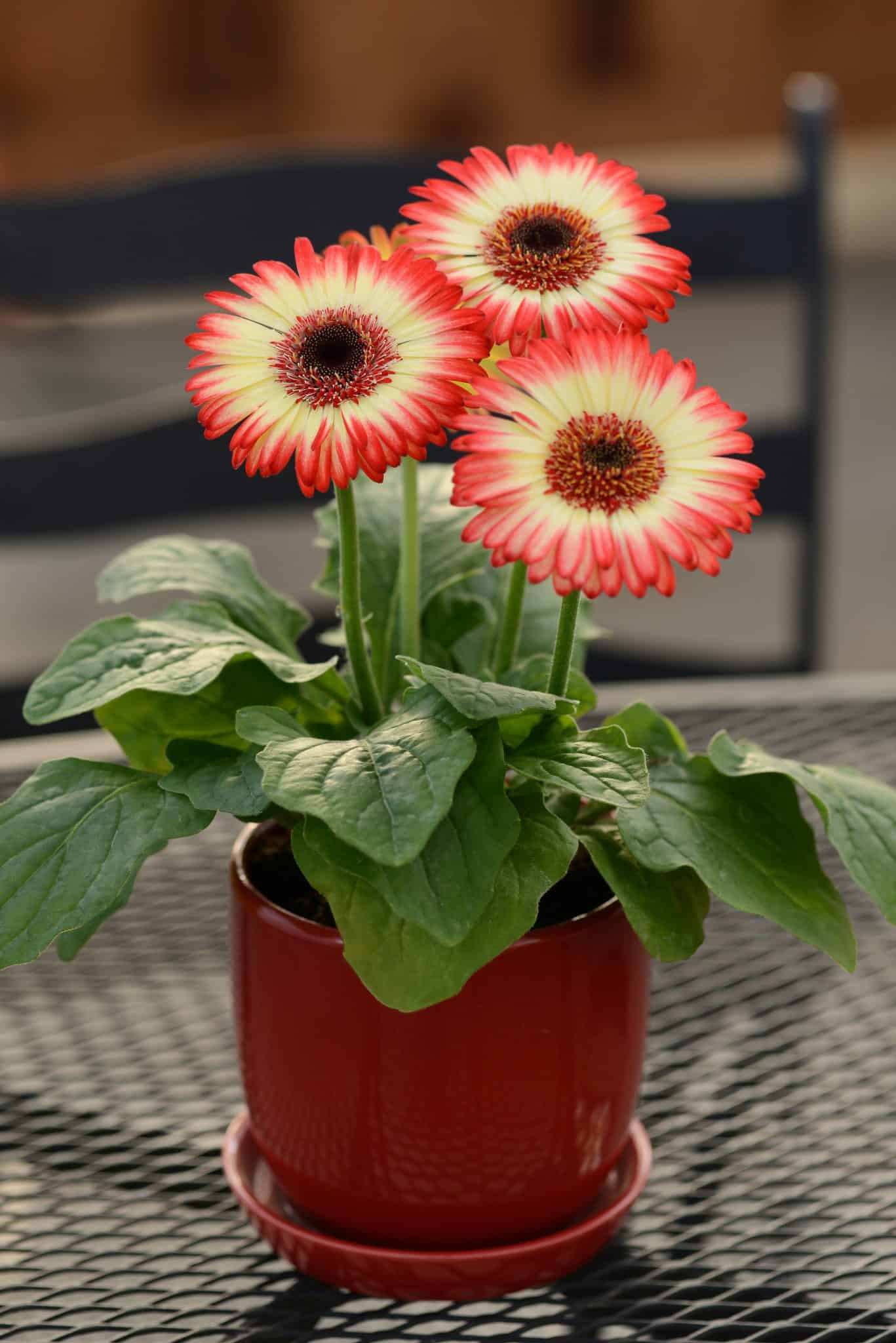The Gerbera daisy, with its radiant blooms and captivating colors, has earned its place as a beloved flower worldwide. Native to South Africa, this stunning plant belongs to the Asteraceae family, which also includes sunflowers and daisies. Its botanical name, Gerbera jamesonii, pays homage to the 18th-century German naturalist Traugott Gerber.
A Symphony of Colors
Gerbera daisies boast a dazzling array of colors, ranging from soft pastels to vibrant hues. You can find them in shades of white, yellow, orange, pink, red, and even bicolor varieties. The flower head typically features a central disc surrounded by a ring of petals. The size and shape of the flower head can vary depending on the cultivar, with some featuring single rows of petals while others display multiple layers.
Cultivation and Care
Gerbera daisies thrive in well-drained soil and full sunlight. They prefer temperatures between 65°F and 75°F (18°C to 24°C). While they can tolerate some shade, optimal flowering occurs in full sun.
Watering
:max_bytes(150000):strip_icc()/gerbera-daisy-pink-potted-getty-0523-449026609b54486cb742032aff3eb883.jpg)
Proper watering is crucial for healthy Gerbera daisies. Water the plants deeply but infrequently, allowing the soil to dry slightly between waterings. Overwatering can lead to root rot, so it’s important to avoid soggy soil.
Fertilizing
Gerbera daisies benefit from regular fertilization during the growing season. Use a balanced liquid fertilizer diluted to half strength every two weeks. Avoid over-fertilizing, as it can damage the plant.
Pruning
Regular pruning can help maintain the shape of the plant and encourage new growth. Remove spent flowers and any yellowing or damaged leaves. Pruning also helps prevent diseases and pests.
Common Pests and Diseases
Gerbera daisies are susceptible to a few common pests and diseases:
Pests
:max_bytes(150000):strip_icc()/gerber-daises-4121360-hero-bfd1a98e8bb44c45891b84d9df63b5ac.jpeg)
Aphids: These small insects can damage the plant by sucking sap.
Diseases
Powdery mildew: This fungal disease causes a white, powdery coating on leaves.
To combat these problems, it’s essential to maintain good hygiene practices, such as removing infected plant material and avoiding overhead watering. You can also use insecticidal soap or neem oil to control pests.
Propagation
Gerbera daisies can be propagated through seed or division.
Seed Propagation

Sow seeds in a well-draining seed-starting mix.
Division
Divide mature plants in spring or fall.
Indoor Cultivation
Gerbera daisies can also be grown indoors as potted plants. Choose a sunny location and provide adequate light. During the winter months, you may need to supplement natural light with artificial lighting.
Gerbera Daisies in Floral Arrangements
Gerbera daisies are a popular choice for floral arrangements due to their vibrant colors, long vase life, and elegant appearance. They can be used in a variety of arrangements, from simple bouquets to complex designs.

When arranging Gerbera daisies, consider the following tips:
Color palette: Choose a color scheme that complements the occasion and personal preference.
By following these tips, you can create stunning floral arrangements that showcase the beauty of Gerbera daisies.
In conclusion, Gerbera daisies are a delightful addition to any garden or home. With their vibrant colors, elegant blooms, and relatively low maintenance requirements, they are a popular choice among gardeners and flower enthusiasts alike.
:strip_icc()/red-gerbera-daisies-b9580fce41314e999ff0a78b965eb2ce.jpg)
Gerbera Daisy Plant
:max_bytes(150000):strip_icc()/gerbera-daisy-pink-potted-getty-0523-449026609b54486cb742032aff3eb883.jpg?ssl=1)